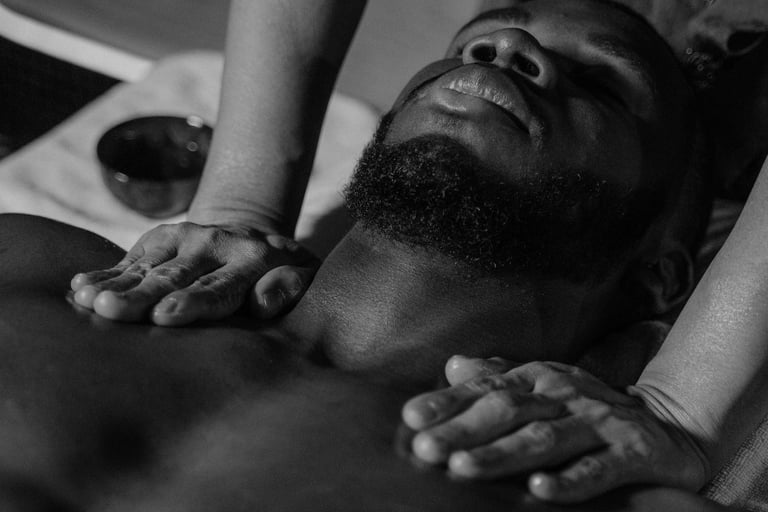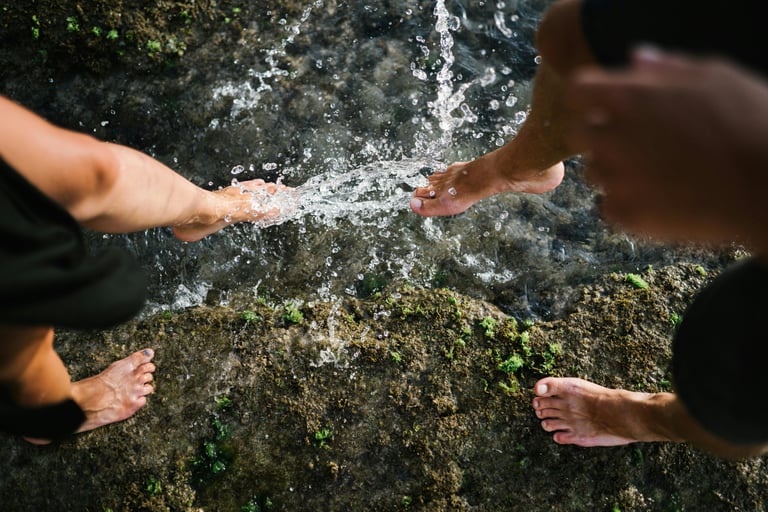Ambiguity Lives in the Body
A series on ambiguity, flow, and formlessness — Part 3
Mike O'Connor
11/17/20253 min read
Rhea, whose name means "flowing," is one of the oldest figures in the Greek pantheon. She doesn’t stand for a specific form. She stands for motion itself—for continuity, transformation, becoming. Her presence reminds us that before things were shaped and named, they moved. They didn’t need to be finished to be meaningful. This is something the body understands. And something that becomes very clear when working with people in pain, in transition, in search of themselves.
Sometimes people ask: if someone comes in with pain here, or with this history, or that pattern—should I do X or Y? And in the Pantarei Approach, we often say: it depends. Not as a way to avoid answering, but because no two people, no two sessions, no two moments are ever the same. The person in front of you is not a protocol. Their body is not a map to be decoded. Each body shows up as part of a larger stream—of memory, resistance, imagination, language. And so we don’t approach it as a problem to be solved. It’s a flowing system—emotional, perceptual, relational—and it’s constantly reshaping itself in response to the world around it.




Rivers, Not Routines
A river isn’t finished. It doesn’t hold its form because there is no single form. Its shape is defined by what surrounds it; by rock, slope, wind, rain, season. The water adapts. It finds a path. That’s what gives it its power. The same is true of bodies. We are shaped by what we move through—our relationships, memories, touch, trauma, language, chance. We shift. We hold. We repeat. We respond.
"Think of the way a river moves. As it flows, it changes the whole of what it is through evaporation, erosion, and deposition. The whole river continually changes all at once. We cannot step into the same river twice because there is no save river, us, or the world," Thomas Nail writes in his book on motion and matter.
This is why form isn’t always the goal. In fact, form can get in the way. The need to name, define, or fix can interrupt what’s trying to happen. And so we listen instead—to what isn’t finished yet. To the emotion that doesn’t fit a diagnosis. To the pattern that doesn’t settle into clarity. These are not problems to solve. They’re currents to follow.
Unfinished doesn’t mean incomplete. Sometimes a gesture, a sigh, a silence holds more truth than any mapped-out technique. What feels like stuckness is often just a loop waiting to be noticed. Pain can be the shape that flow takes when it has nowhere else to go.
Formlessness Is Not a Flaw
The cave drawings we explored earlier—the ones where a boat blurs into a bird, or an elk becomes a vessel—weren’t about indecision. They were about reality. A refusal to trap life in categories. They didn’t need to render a single animal. They captured the way one thing becomes another. They showed life in motion.
That’s how I understand this work. Not as treatment, not as performance, but as meeting what moves. Letting the form arise from what’s present. Letting sensation speak before strategy. In the Pantarei Approach, you don’t memorize techniques. You don’t follow a fixed model. You listen. You stay with what emerges. You allow the person, their body, their presence, their way of sensing , to guide you. And that means holding ambiguity with care. Letting the water teach the shape.
Ambiguity lives in the body, yes. But so does formlessness. So does the possibility to not be pinned down. When we stop needing things to be finished, we get to experience them while they’re still becoming. And when we stay with what flows—even when it’s messy, uncertain, unnamed—we begin to feel what life actually is: not a static answer, but a continuous unfolding.
